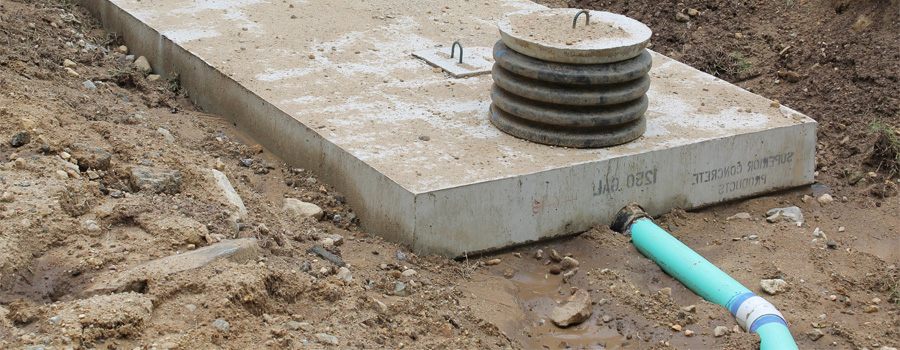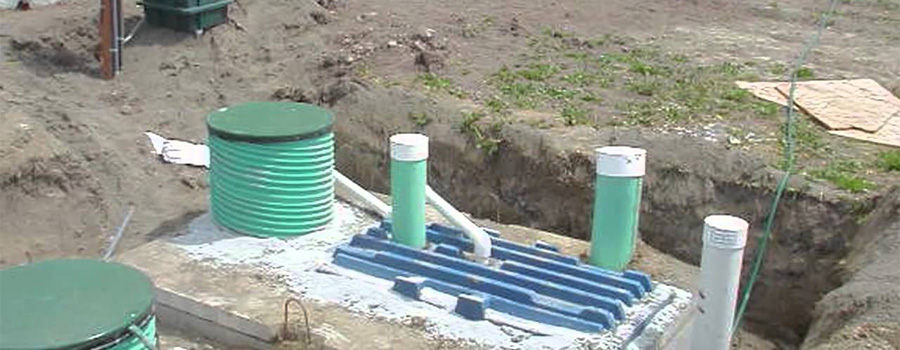The average cost for a new septic system capable of providing support for a 3-4 bedroom home is around $4,000. That number increases to almost $15,000 with two alternating pumps.
Averages always consider the highs and lows of prices, and your final cost will depend on factors such as the current condition of waste lines and the condition of the soil where the tank gets placed.
A low-end installation cost is $3300, increasing to $4000 for average quality, and rising to $5040 for a high-end system.
Septic System Cost by Type
Conventional systems typically use gravity or Anaerobic Systems or the more expensive pressure distribution systems. The standard or Anaerobic system installation cost averages $3500 but can reach as high as $5000, and uses gravity to assist the effluent or liquid waste for processing as it makes its way into the drain field.
The Aerobic septic system costs more than a gravity system because it uses oxygen to help break down solids in the septic tank using a motor and timer. In this scenario, the end waste product treated by this system is cleaner than by conventional means, and it is suitable for use in above-ground irrigation needs after sterilization. Also, the size of the drain field is about half that required for a gravity system.
Mound Septic System
Suppose the perc test (percolation test) for your property shows that an underground system won’t work in your situation. In that case, your only choice is an above-ground mound septic system that comes in at about two or three times the typical cost, or around $15,000.
The engineered mound system contains a drain field trench, which receives effluent from the septic tank, and it gets pumped to the mound from there. Waste treatment happens while it discharges into the trench and filters through the sand and the surrounding soil.
Sand Filter System
The sand filter system’s cost sits between $6,000 and $10,000, and the sand filters can have a long-life of 20 years in some areas. The effluent enters the septic tank and then gets pumped to the recirculating sand filtering system, where gravity flow returns treated effluent to the drain field.
At the cost of between $7,000 to $10,000, the pressure distribution system requires only a gap of 2 feet between the bottom of the system and the water table, and a pump helps get the liquid waste to reach more of the drain field than by gravity alone.
Septic Tank Cost by Type
A well-constructed tank placed in good average soil can last up to 40 years or longer.
Concrete septic tanks make up the most common type in use, mainly because of their durability and lifespan, assuming suitable construction materials. Tanks from 1000 gal to 1500 gal range in price from $815 to $1520. A good idea is to purchase one with rebar to help with the strength, but you will pay a little more for installation due to the extra weight.
Stainless Steel tanks for new construction are not standard due to the low-reliability factor of steel. Rust and corrosion cause early failure of systems with stainless steel tanks.
Like plastic, fiberglass septic tanks are lighter and easier to install, but are they any better? The average cost of a 3-4 bedroom home using fiberglass is $1600 to $2000. Fiberglass doesn’t deteriorate when buried, and it doesn’t allow algae growth due to its construction.
Fiberglass septic tanks range in price from $1600 to $2000, in sizes from 1000 gal to 1500. Bear in mind that fiberglass tanks can cost up to two times that of concrete tanks, but they are 30% lighter and cheaper to install than concrete. Fiberglass also won’t develop worrisome cracks due to expansion and contraction like its concrete counterparts.
Plastic tanks (polyethylene) are less expensive to purchase and install and cost an average of $800 to $2000. While it is true, they are not likely to crack on their own but have broken under pressure in variable soil conditions. Check your state’s guidelines to confirm approval for use.









